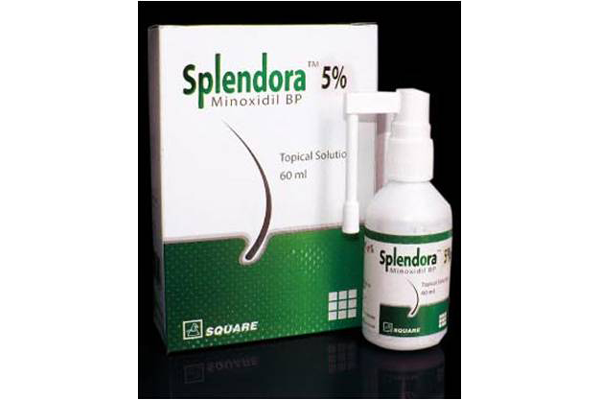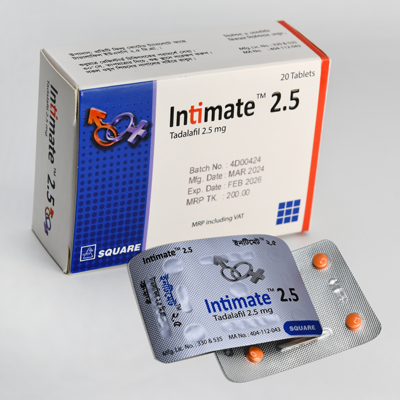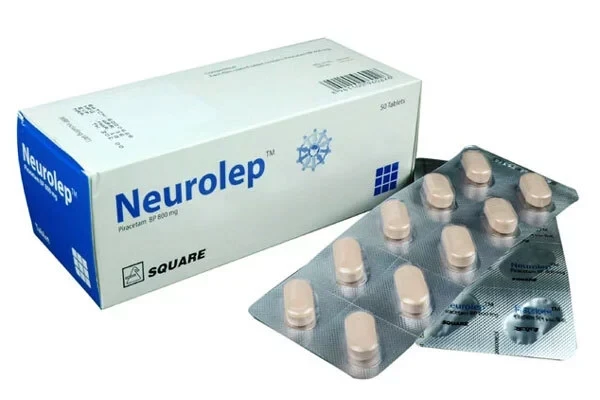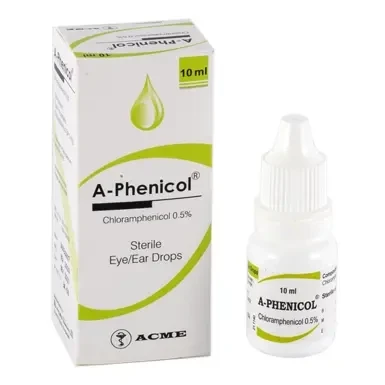

QTP XR Tablet (Extended Release) Quetiapine Fumarate 200 mg
Inhouse product
-
৳11.40
৳12.00 -
৳42.75
৳45.00 -
৳16.63
৳17.50 -
৳2.14
৳2.25
Reviews & Ratings
Indications
QTP XR is indicated
for the treatment of Acute and chronic psychoses, including schizophrenia,
Bipolar Disorder including: treatment of manic episodes satisfying DSM-IV
criteria for mania associated with bipolar disorder, treatment of
depressive episodes associated with bipolar disorder, maintenance treatment of
bipolar I disorder, in combination with a mood stabilizer, for the prevention
of recurrence of manic, depressive or mixed episodes.
* রেজিস্টার্ড চিকিৎসকের পরামর্শ মোতাবেক ঔষধ সেবন করুন'
Pharmacology
Quetiapine Fumarate is
an atypical psychotropic agent belonging to a chemical class, the
dibenzothiazepine derivatives. Quetiapine is an antagonist at multiple
neurotransmitter receptors in the brain: serotonin 5HT1A and 5HT2,
dopamine D1 and D2, histamine H1, and adrenergic α1 and α2 receptors.
Quetiapine has no appreciable affinity at cholinergic muscarinic and
benzodiazepine receptors. The mechanism of action of Quetiapine is unknown.
However, it has been proposed that this drug's efficacy in schizophrenia is
mediated through a combination of dopamine D2 and serotonin 5HT2 antagonism.
Quetiapine's antagonism of histamine H1 receptors may explain the
somnolence and that of adrenergic a receptors may explain the orthostatic
hypotension observed with this drug.
Dosage &
Administration
Acute and chronic
psychoses, including schizophrenia: Quetiapine should be administered twice daily, with or without
food. The total daily dose for the first four days of therapy is 50 mg (Day 1),
100 mg (Day 2), 200 mg (Day 3) and 300 mg (Day 4). From Day 4 onwards, the dose
should be titrated to the usual effective dose range of 300-450 mg/day.
However, this may be adjusted, depending on the clinical response and
tolerability of the individual patient, within the range 150 to 750 mg/day.
Manic episodes
associated with bipolar disorder: Quetiapine should be administered twice daily, with or without
food. The total daily dose for the first four days of therapy is 100 mg (Day
1), 200 mg (Day 2), 300 mg (Day 3) and 400 mg (Day 4). Further dosage
adjustments up to 800mg/day by Day 6 should be in increments of no greater than
200 mg/day. The dose may be adjusted depending on clinical response &
tolerability of the individual patient, within the range of 200 to 800 mg/day.
The usual effective dose is in the range of 400 to 800mg/day.
Depressive episodes
associated with bipolar disorder: Quetiapine should be administered once daily at bedtime, with
or without food. The usual dose is 300 mg/day. The daily dose for the first
four days of therapy is 50 mg (Day 1), 100 mg (Day 2), 200 mg (Day 3) and 300
mg (Day 4). Quetiapine can be titrated to 400 mg on Day 5 and up to 600mg by
Day 8. Antidepressant efficacy was demonstrated with Quetiapine at 300mg and
600 mg, however no additional benefit was seen in the 600mg group during short
term treatment.
Maintenance treatment
of bipolar I disorder in combination with mood stabilizers: Patients who have responded to Quetiapine in
combination therapy with a mood stabiliser for acute treatment of bipolar
disorder should continue on Quetiapine therapy at the same dose. Quetiapine dose
can be re-adjusted depending on clinical response and tolerability of the
individual patient. Efficacy was demonstrated with Quetiapine (administered
twice daily totalling 400mg to 800mg a day) as combination therapy with a mood
stabilizer.
* রেজিস্টার্ড চিকিৎসকের পরামর্শ মোতাবেক ঔষধ সেবন করুন'
Interaction
Caution should be
exercised when QTP XR is used concomitantly with medicines known to cause
electrolyte imbalance or to increase QT interval. Co-administration of QTP XR
and thioridazine or carbamazepine caused increases in the clearance of QTP XR.
Co-administration of QTP XR with another microsomal enzyme inducer, phenytoin,
also caused increases in the clearance of QTP XR.
Contraindications
Quetiapine is
contra-indicated in patients who are hypersensitive to it.
Side Effects
The most commonly
reported Adverse Drug Reactions (ADRs) with QTP XR are somnolence, dizziness,
dry mouth, withdrawal (discontinuation) symptoms, elevations in serum
triglyceride levels, elevations in total cholesterol (predominantly LDL
cholesterol), decreases in HDL cholesterol, weight gain, decreased haemoglobin
and extrapyramidal symptoms.
Pregnancy &
Lactation
The safety and
efficacy of Quetiapine during human pregnancy have not been established.
Therefore, Quetiapine should only be used during pregnancy if the benefits
justify the potential risks and the administered dose and duration of treatment
should be as low and as short as possible. The degree to which Quetiapine is
excreted into human milk is unknown. Women who are breast-feeding should
therefore be advised to avoid breast-feeding while taking Quetiapine.
Precautions &
Warnings
- Suicide/suicidal
thoughts or clinical worsening:
Depression is associated with an increased risk of suicidal thoughts,
self-harm and suicide (suicide-related events). This risk persists until
significant remission occurs.
- Concomitant
Illness: QTP XR should be used
with caution in patients with known cardiovascular disease,
cerebrovascular disease, or other conditions predisposing to hypotension.
QTP XR may induce orthostatic hypotension especially during the initial
dose-titration period.
- Seizures: As with other antipsychotics, caution is
recommended when treating patients with a history of seizures.
- Tardive
Dyskinesia and Extrapyramidal Symptoms (EPS): If signs and symptoms of tardive dyskinesia appear,
dose reduction or discontinuation of QTP XR should be considered.
- Neuroleptic
Malignant Syndrome:
This syndrome has been associated with antipsychotic treatment. QTP XR
should be discontinued and appropriate medical treatment given.
- QT Prolongation: As with other antipsychotics, caution should be
exercised when QTP XR is prescribed in patients with cardiovascular
disease or family history of QT prolongation.
- Neutropenia: Severe neutropenia (<0.5x109/L) has been
uncommonly reported in QTP XR clinical trials. Most cases of severe
neutropenia have occurred within the first two months of starting therapy
with QTP XR.
- Hyperglycemia
& diabetes mellitus:
Increases in blood glucose and hyperglycaemia, and occasional reports of
diabetes, have been observed in clinical trials with QTP XR.
Use in Special
Populations
Elderly: As with other antipsychotics, QTP XR should
be used with caution in the elderly, especially during the initial dosing
period. The rate of dose titration may need to be slower, and the daily therapeutic
dose lower, than that used in younger patients, depending on the clinical
response and tolerability of the individual patient. The mean plasma clearance
of QTP XR was reduced by 30% to 50% in elderly subjects when compared with
younger patients.
Children and
Adolescents: QTP XR is not
indicated for use in children and adolescents below 18 years of age.
Overdose Effects
In clinical trials,
survival has been reported in acute overdoses of up to 30 grams of QTP XR.
There is no specific antidote to QTP XR. In cases of severe intoxication, the
possibility of multiple drug involvement should be considered, and intensive
care procedures are recommended, including establishing and maintaining a
patent airway, ensuring adequate oxygenation and ventilation, and monitoring
and support of the cardiovascular system. In cases of QTP XR overdose,
refractory hypotension should be treated with appropriate measures such as
intravenous fluids and/or sympathomimetic agents (adrenaline and dopamine
should be avoided, since beta stimulation may worsen hypotension in the setting
of QTP XR-induced alpha blockade). Close medical supervision and monitoring
should be continued until the patient recovers.
Therapeutic Class
Atypical neuroleptic
drugs
Storage Conditions
Keep this medicine out
of the sight and reach of children. Do not use this medicine after the expiry
date which is stated on the blister pack and the carton. The expiry date refers
to the last day of that month. Store in a cool and dry place away from light.
Frequently Bought Products
Frabex IM/IV Injection 5ml, Tranexamic Acid 500 mg/5 ml
Splendora Scalp Solution 60ml, Minoxidil 5%
Intimate Tablet, Tadalafil 2.5 mg
Neurolep Tablet, Piracetam 800 mg
Slipam Capsule, Flurazepam 15 mg
Product Queries (0)
Login Or Registerto submit your questions to seller
Other Questions
No none asked to seller yet
-
৳11.40
৳12.00 -
৳42.75
৳45.00 -
৳16.63
৳17.50 -
৳2.14
৳2.25

















